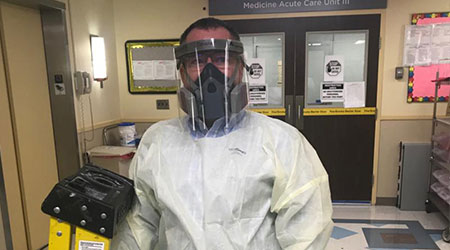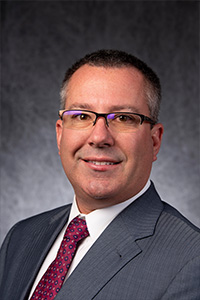Racing the Surge: Healthcare Organization Ramped Up Pandemic Preparedness
The University of Maryland Medical Center scrambled to find ventilators, create surge capacity as the pandemic ramped up. Here's how they were were successful.
"Stay home, stay safe" became one of the mottos of the coronavirus pandemic response. But as the office towers, schools, shopping centers, and other non-critical spaces emptied in response to shelter-in-place orders, facility managers and their skeleton crews remained, safeguarding the core of their companies and institutions. And in the critical facilities which have had to function despite an all-encompassing and rapidly evolving threat, facility managers and their teams have likewise rapidly evolved protocols, braved risks, and kept their facilities operational to serve the need.
There is a lot of talk about the future, about what lies beyond this pandemic and the way it will shape how work and life gets done. One thing that is certain is the time of facilities management being in the shadows is over. The profession has rightfully been crowned essential. Likely anyone reading this already knew that, but now everybody else in the organization knows it, too.
Racing the surge
Richie Stever, director of operations and maintenance at the University of Maryland Medical Center, counts himself as lucky. He runs a very busy academic medical center across two campuses totaling more than 1,000 beds. On an average day, about 10,000 people walk through the downtown campus alone, but at the peak of the pandemic response that number was cut by more than half as the patient load was decamped, and any non-essential staff and the general public were excluded from the buildings.
“ I would be hard-pressed to understand how anyone could prepare for what we actually saw, what this put on our tables. —Richie Stever, University of Maryland Medical Center
At the same time, a whirlwind of activity from his department was rapidly expanding COVID-19-related capacity at the medical center. "We understood that the patients that needed care in a hospital setting would be very sick and would need a ventilator," Stever says. Together with the operations team, the hospital created eight different surge plans, with each step up converting more space to make it COVID-19-related. In May, at Surge 4, Stever's team had moved the facility from 100 isolation rooms to 300 over five weeks, with the guidance telling them to make as many negative pressure rooms as possible. The medical center's original isolation rooms are managed by the building's exhaust system, so to add capacity they removed windows and ducted HEPA units out of them. They created anterooms and airlocks on the fly. They tweaked the HVAC system, turning down supply and turning up return in certain areas.
Trying to source the same materials as everyone else in the country put pressure on the response. "As clinicians were struggling to find masks and gowns, we were struggling to find negative pressure portable HEPA filter units," Stever says. When a new vendor was found, one team member hopped in a truck and drove to New Jersey to pick up 40 units.The speed and efficiency with which the facilities team was able to create those isolation rooms is a point of pride for the group.
Still, Stever says, it was a lucky thing the pandemic reached his facility in the shoulder months. Had the pandemic hit in the winter or the summer, the number of isolation rooms possible would have been far less. "We would not have been able to keep up with the environmental controls," he says. But with luck and ingenuity, they were.
 Richie Stever suits up to change a ceiling tile outside of a patient unit.
Richie Stever suits up to change a ceiling tile outside of a patient unit. As critical facilities, healthcare is tasked with always being ready for anything. But a tabletop exercise can never compare with reality. "I would be hard-pressed to understand how anyone could prepare for what we actually saw, what this put on our tables," Stever says.
One element that couldn't be planned for, says Stever, is the "fear factor." Hospitals are high-risk work environments on a normal day, but a novel virus and a global pandemic takes the concern level up quite a few notches, even for routine tasks like plunging a toilet or changing a ceiling tile. In the early days of the pandemic, a leak at one of the facilities saturated a ceiling tile which fell out in the hallway outside of a COVID unit. Stever asked his team if they felt comfortable going up to fix it and they declined. So he gowned up with full PPE and took care of the issue.
"I didn't want to force it on them, and I want to lead by example," he says. "If I trust my training and equipment, then they should too." But as the pandemic continues, Stever says the team has moved from fear to acceptance. Nevertheless, all efforts are made to defer work in COVID-19 areas unless it is a critical item.
With the hospital's COVID-19 response from the facilities side now in maintenance mode, Stever says they are considering ways to decommission or repurpose materials and are restoring the facility to a new normal while still leaving the clinical space prepared for whatever the near future brings.
What does the COVID-19 response look like from where you’re sitting? Send an email sharing best practices, surprising pivots, or just observations to naomi.millan@tradepress.com. General comments and questions welcome as well.
Related Topics:
















